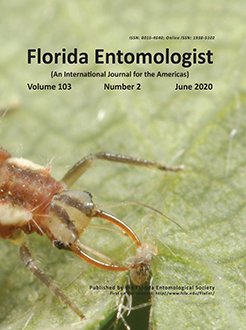Generalist arthropod predators often exhibit a range of intraguild interactions reducing their potential efficacy as biological control agents. These interactions may include consumptive or nonconsumptive effects that mediate the impacts of herbivores. We examined interactions among 2 generalist predators, the striped lynx spider (Oxyopes salticus Hentz; Araneae: Oxyopidae) and an ant (Lasius neoniger Emery; Hymenoptera: Formicidae), and a herbivore, the green cloverworm (Hypena scabra F.; Lepidoptera: Erebidae), all prevalent in central Kentucky soybean agroecosystems. We hypothesized that individual predator treatments would reduce green cloverworm survival and resultant leaf damage, but that predators would interfere with each other when both were present. To study these interactions, field cages containing potted soybeans were used to examine 8 treatment combinations (control, cloverworm, spider, ant, spider + cloverworm, ant + cloverworm, ant + spider, and ant + spider + cloverworm). When proportional leaf damage was compared, spider, ant + spider, and spider + cloverworm treatments had significantly less damage than the ant, ant + cloverworm, and ant + spider + cloverworm treatments. Spider presence tended to decrease plant damage while ant presence significantly increased damage. No differences among treatments were found for either spider or cloverworm recovery, indicating potential nonconsumptive effects of ants that may include compensatory feeding. We found that generalist predators, such as L. neoniger, can inhibit biological control due to nonconsumptive interactions even when the same species in a different system provides substantial levels of pest suppression.
How to translate text using browser tools
10 July 2020
Ants Increase Cloverworm Herbivory Via Nonconsumptive Pathways
Hannah J. Penn,
Kacie J. Athey

Florida Entomologist
Vol. 103 • No. 2
June 2020
Vol. 103 • No. 2
June 2020
field cage
Food web
Hypena scabra
Lasius neoniger
Oxyopes salticus




